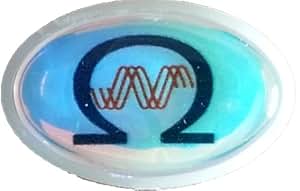The health consequences of radiation from 5G are being debated. However, 5g towers radiation suggests a link between RF radiation and the development of cancers in male rats. https://thefashionanswers.com/are-usually-meaning-of-emf-radiation/ was classified up until it was taken off the list on the 12th of December 2012 by the Central Intelligence Agency, but it demonstrates that radiofrequency could be a cause of cancer for animals including humans. In the study, researchers subjected male animals to radiation for a period of 15 days. They discovered that they developed same kinds of cancers that humans develop.
Health impacts of 5G radiation
While the rapid growth of wireless communication has led to the creation of 5G systems however, there is a growing concern regarding the health risks of radiation from 5G. Although the higher frequencies do not affect the body as much as the older technology, scientists have identified potential health effects that are systemic and have called for further studies. To ensure that people are protected to protect the population, the European Commission is requesting independent studies to determine whether the technology poses any health hazards.
It is important to note that there's a substantial number of misinformation about the health effects of 5G, and it is essential to dispel any doubts that remain. While the technology is not yet widespread but there are many who are being told it might cause health problems, most often via social media where sexy language is used.
Beamforming technique
Beamforming is among the most important technologies for five-G networks. It is a method which makes use of multiple radiating elements to create narrow beam. The goal for beamforming is minimize any unwanted radiation in the signal that results. This method is typically used for wireless communication systems, and is essential for the 5G's cost-effective coverage.
The method is based on electronically weighting the individual signals of each antenna. This produces the narrow beam of radiation that increases cell coverage indoors and at the edges of cells. This is essential since poor coverage could result in poor user satisfaction. Along with improving Find out more , beamforming helps reduce the amount of interference a user experiences from other devices.

Power density
The energy density of 5G electromagnetic radiation coming emanating from towers on cell phones will be similar to that of previous generations of 4G and 3G systems. The reason for the lower power is the sensitiveness of electronic components. The maximum radiation output of a 2G phone was approximate 2 Watts. The output of a 4G handset was about 200 milliwatts.

The power density is a measure of the amount of electromagnetic energy that can be absorbed by the body at a certain distance. Its power density in 5g radiation is typically expressed in Watts per square metres. In contrast to the SAR measurement power density is a measurement of the quantity of electromagnetic energy that can be found in an area. The parameters for power density may differ for mobile devices and wearables dependent on their operating frequency and distance.
Specific absorption
The Specific Absorption Ratio (SAR) is a parameter that determines the speed at which a specific frequency deposits power into human tissues. In general, the SAR number must not exceed 2 Watts per kilogram of body mass. The SAR value is calculated through the electrostatic field within tissues and the mass density, which is measured as kilograms for each cubic millimeter. The method was recent applied to the proposed antenna design.
The latest radio technologies that comprise the 5G system operate in frequencies that are below 6 GHz. These frequencies are referred to as millimeter waves. However, according to the FCC's SAR compliance program is only applicable to frequencies up to 6 GHz. Furthermore, the SAR test requires that measurements be performed in phantoms containing tissue simulating media.
Skin health and its effects
Currently, we know very little about the health effects of 5G radiation on the skin. Our knowledge of the subject is limited because of the absence of in-vivo studies and theoretical models. However, there is an urgent need for more studies on the impacts of 5G radio frequency radiation on human skin. Using 5G radio frequencies can cause damage to the skin specifically to the epidermis, which is an extremely sensitive organ.
Contrary to 4G, 5G's radiation has a high frequency which has been proven to cause heat to human tissues. Human bodies are dipolar, so the increased frequency of 5G radio waves could cause heat to the skin. The exposure to radio frequencies from 5G can also affect other organs of the body, like the brain.
